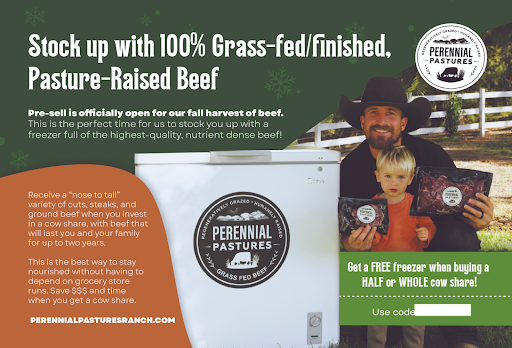
How I’ve Run Postcard Campaigns for E-Commerce Brands That Get Over 20x Return on Ad Spend
Sending ads by mail may seem like a thing of the past, but this marketer thinks it’s a surprisingly effective approach for e-commerce brands.
Founder of Orzy Media
Direct mail is such a cool marketing strategy.
I bet that’s a sentence you’re surprised to hear in a world of flashy social media videos and hyper-targeted online ads. Even though advertising via mail has been done for centuries, it's still a relatively untapped marketing concept in the e-commerce world — meaning there’s a lot of potential for small businesses to stand out.
I’ve worked on direct mail strategies for several of my clients, and the results speak for themselves: These campaigns see an average of 10 to 50x ROAS (return on ad spend), and one that I worked on even saw a 107.9x return.
Direct mail works so well for a couple of reasons. For one, there’s less competition because the cost of printing and postage scares some marketers away when you compare it to sending an email newsletter or posting on social media sites. While those may be cheaper strategies upfront, there’s a higher chance your brand will get lost in the fray, leading to a lower return on your investment. It’s easier to stand out among a handful of letters.
I also think the tactile nature of mail has an impact. You can scroll past an ad online, but you have to physically hold a postcard until you decide what to do with it. I don’t know about you, but if a mailer is even remotely interesting, it will sit on my countertop or my desk until I act on it. That ability for your brand message to occupy physical space in someone’s home is unique and powerful.
Read on to learn how I worked with one of my clients, beef delivery service Perennial Pastures Ranch, to help them achieve 11.2 to 107.9x ROAS from direct mail and grow their business threefold in seven months — and what other small businesses can learn from their story about running their own campaigns.
Meet your audience at the right moment
Just like many other marketing channels, so much of the success we had with Perennial Pastures’ direct mail campaign came from hitting people at the right point in their customer journey.
Direct mail can work for new customer acquisition—especially if you’re a local business or are targeting specific zip codes where you can do the cheaper every door direct. But we’ve found the most success in using it for retargeting or retention.
For example, we’ve sent direct mail campaigns for:
- Abandoned carts: If a customer has gotten as far as giving you their address but didn’t complete their purchase, you can drop a postcard in the mail to encourage them to seal the deal.
- Customers who haven’t purchased in a while: Say you have a previous customer who hasn’t purchased in a while. A note in the mail might be the push they need to revisit your brand.
- Customers who visited our site or subscribed to our list and then never purchased: We use a tool called PostPilot that lets you find addresses for these customers, allowing us to retarget site visitors or email subscribers just like we might with online advertising using cookies.
- Customers who bought from us in person but aren’t on our list: One cool cross-platform campaign we ran was to customers who purchased from us at farmer’s markets but didn’t give us their email addresses. We were able to cross-reference their names to get their physical addresses and use a direct mail offer to send them to our website, allowing us to capture them as an online customer, too.
- Special offer seasons: Instead of getting lost in the online fray for, say, Black Friday, we’ve sent promotions in the mail.
The best way to find audiences to target with direct mail is by looking at all of your owned audiences and touch points that your brand has with customers, then identifying holes in your bucket — places where you’re losing customers that you could plug up with a clever re-engagement campaign.
Generally, I’ve found campaigns aiming to win back previous customers, abandoned carts, and deadline-driven seasonal promotions to be the most successful audiences for direct mail.
Come up with a thoughtful offer
Sure, you could just send these customers a postcard or cardalog showing off your products and hope for the best. But direct mail campaigns are more successful at inspiring action when they’re paired with a compelling offer.
The most basic and obvious offer is some kind of discount code, but that’s not my favorite, as discounts train customers to never pay full price and always wait for a deal.
Instead, I’m a fan of free gifts with purchase, because it feels like getting something fun in the mail—like this gift is already yours, and all you have to do is claim it. Whatever you offer, I always recommend you give it a deadline to create some urgency for action.

One of our most successful direct mail campaigns for Perennial Pastures came out of brainstorming how we could get more customers to buy their high-ticket beef shares. The biggest objection customers had when considering buying meat in bulk was that they didn’t have enough freezer space.
So, we thought, what if we offered first-time buyers a free freezer with purchase for a limited time? We sent it to people in the local area of the farm who were in our database but had never purchased a cow share before. People got the postcard, paid attention because they were so surprised how significant the free gift was, and it solved their number one objection.
We got a ton of sales that way, and the cost of the freezer was small compared to the potential lifetime value of a customer who now has ample freezer space.

I’m not saying you need to swing this big to succeed at direct mail. But think about where your target customer is now, the action you want them to take, and what offer is needed to push them to that action. That’s how you’re going to come up with the most successful offers.
Design a mailer that doesn’t go straight to the trash
With the right target and a compelling offer, designing the mailer becomes the easiest part, because you don’t typically have a lot of room.
Making sure your offer is obvious from the start is critical, whether it’s a picture of the free gift or clear text that outlines what they’re getting. You don't have much space for copy, so it has to be short and impactful — a clever hook in your brand voice and a brief outline of the details of the offer while highlighting the urgency or scarcity.
Then, make sure to include a clear call to action, whether it’s a coupon code, a special URL, or a QR code to scan.
There is another approach to direct mail that may seem less flashy but can be more successful: disguising your mailing as a normal letter. Instead of sending a postcard or envelope with your logo on it, just send a boring piece of paper in a plain envelope.
When people see this in their mailbox, they’ll think it’s a personal note that needs attention rather than knowing straight away it’s an advertisement, making it even more likely they’ll give it a read.
Direct mail isn’t a magic bullet — it works best in combination with other marketing channels. For Perennial Pastures Ranch, we were advertising on Meta, sending emails, and doing in-person marketing at farmer’s markets on top of our direct mail approaches.
But all those touchpoints are how you build a relationship. We would have customers show up at markets with a postcard in hand, excited to learn more. People who bought a pound of beef from us once would become longtime customers with the right prodding.
Direct mail is just one (surprisingly effective) tool in your box for making it happen.
Try Buffer for free
140,000+ small businesses like yours use Buffer to build their brand on social media every month
Get started nowRelated Articles

The specific practices and prompts I use with ChatGPT to support my ADHD. Any business owner, whether neurodivergent or not, can benefit from using these tools to stay organized and productive.

In this article, get answers to questions about social media for solopreneurs.

Earth Day is one of the (many) days when businesses can create or reaffirm a commitment to practicing sustainability. Here are some ideas for small businesses looking to highlight Earth Day on Instagram.